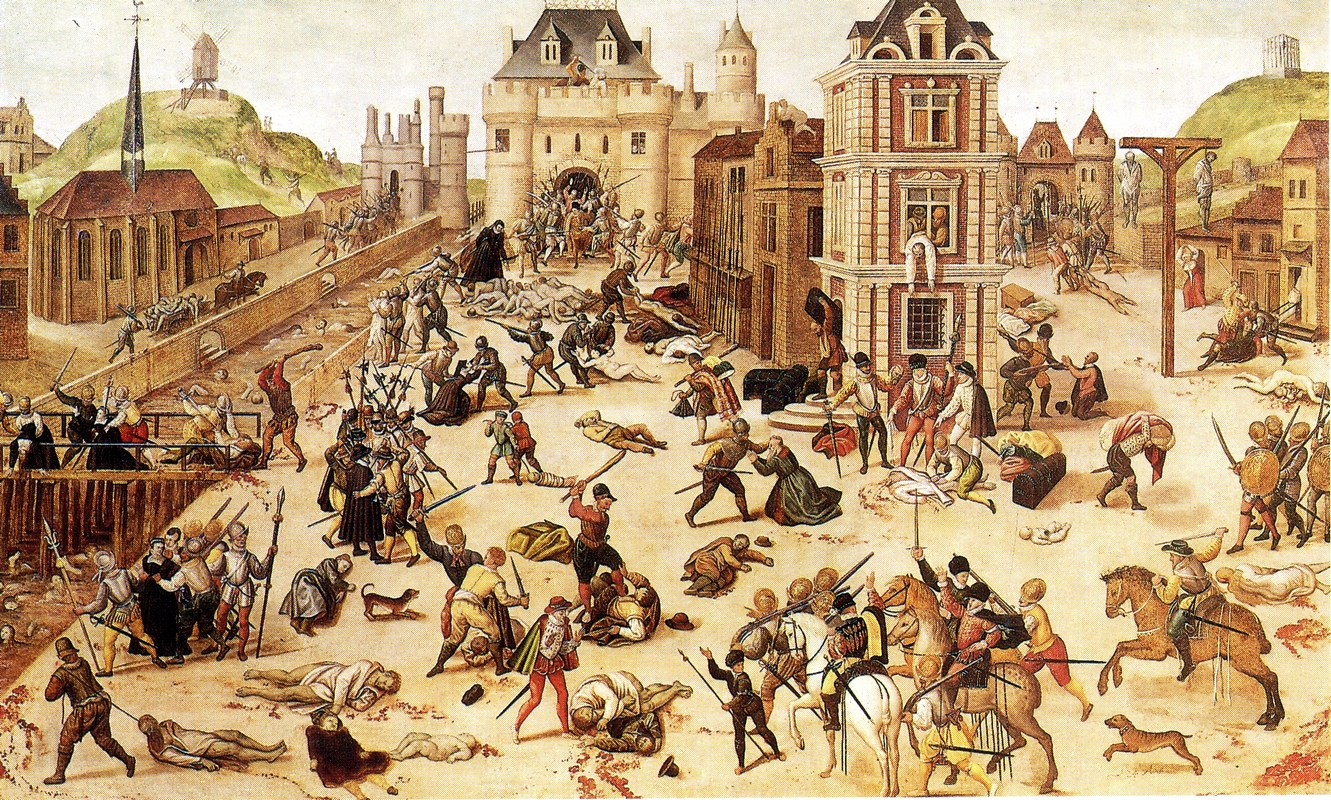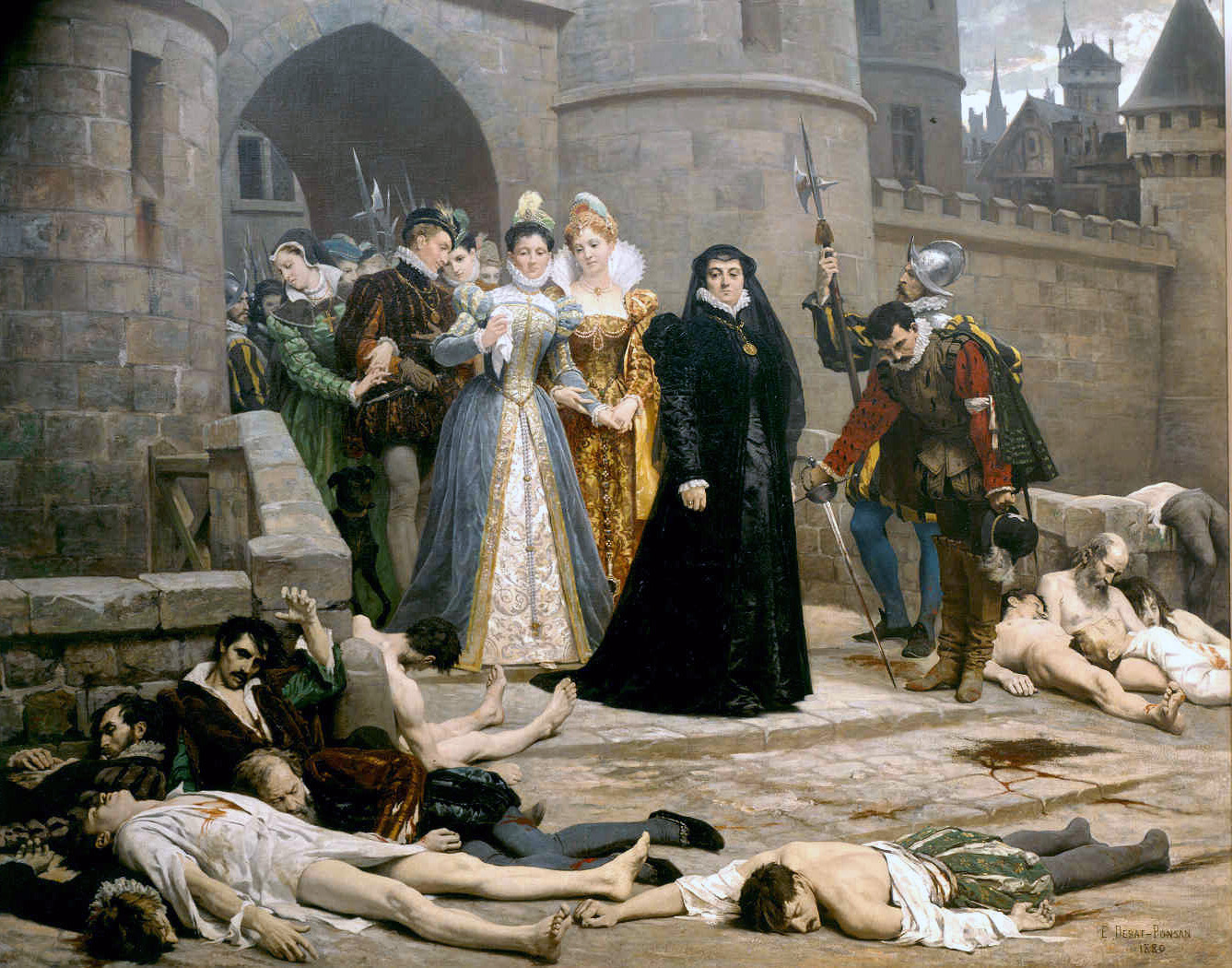The Massacre as painted by François Dubois, a Huguenot painter who settled in Switzerland. To the left rear, Catherine de' Medici is shown emerging from the Louvre to inspect a heap of bodies.
This is a much later depiction of Catherine de Medici coming out to see the carnage. Painted by Édouard Debat-Ponsan in 1880, this Romantic work has the feeling of a stage-play.
Queen Margot (France,1994) is a film based on the novel of the same name by Alexandre Dumas, Sr. (1802-1870) most famous for having written "The Three Musketeers". Although many of the details were invented by Dumas, the novel and film do a good job of portraying the events leading up to the massacre.
This is the lavish wedding scene in which Margot is shoved by her brother King Charles IX when she refuses to say "I do" to the Protestant Henry. This bit of brotherly bullying is probably imaginary, however it does illustrate the fact that noblewomen had very little say in matters of marriage. Royal marriages were contracts made between great powers. In this case the wedding is an attempt at a peace contract which failed miserably.
The great massacre following the wedding:
Below is an excellent lecture by Barbara Diefendorf, a professor of history in the College of Arts and Sciences at Boston University. She discusses the causes and implications of the St. Bartholomew's Day Massacre and the myth-making power of history.



No comments:
Post a Comment